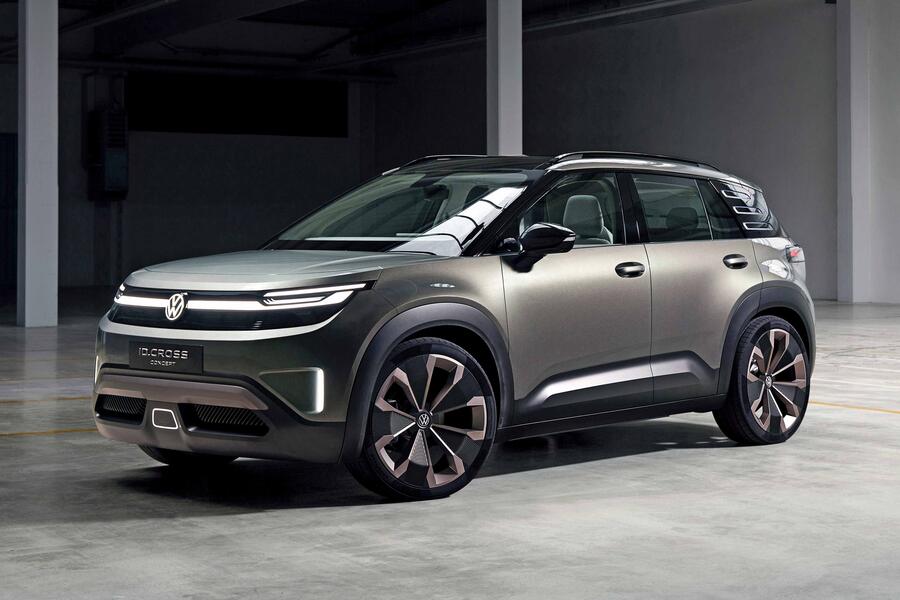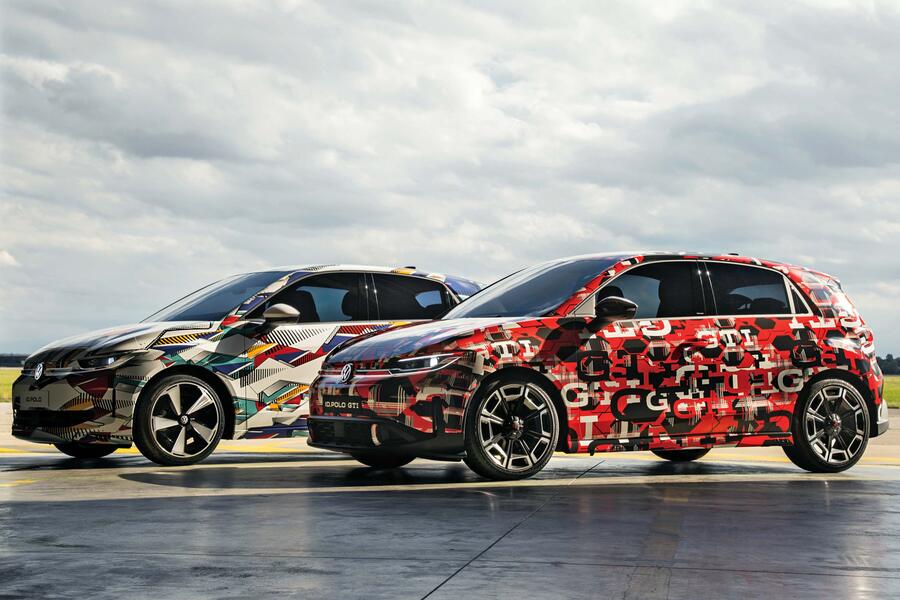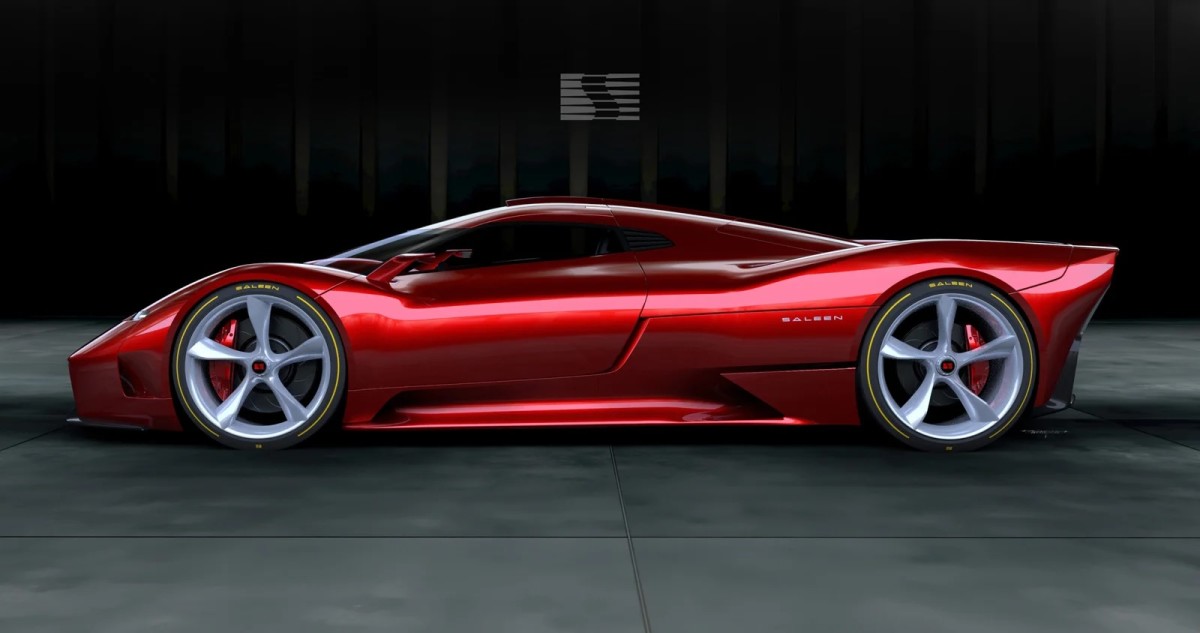Volkswagen’s Return to Dominance Hinges on Reveling in the Power of Human Sensation While Playing Catch-Up with China’s Technological Revolution
In recent years, the automotive industry has been witnessing a seismic shift as traditional manufacturers grapple with the fierce competition posed by increasingly sophisticated Chinese automakers. Driving this competition is a rapidly evolving landscape of technology and consumer expectations, with electric vehicles (EVs) taking center stage. Amid this backdrop, Volkswagen is asserting itself with an unconventional approach that, while seemingly whimsical, speaks to the heart of craftsmanship and instinct in car development: the popometer.
Volkswagen’s technical development chief, Kai Grünitz, has positioned the popometer — a playful term he uses to highlight the sensory perception drivers have when engaging with a vehicle — as a vital tool in the company’s arsenal against the flood of ambitious Chinese vehicles making their way into the global market. The essence of the popometer lies in its emphasis on tangible driving experiences that modern technology and simulations cannot replicate. This reliance on human intuition serves as a stark contrast to the increasingly data-driven approaches by competitors, particularly from China, where rapid-fire development cycles have led to an explosion in the number of sophisticated models.
With a background spanning nearly three decades at Volkswagen, Grünitz embodies the shift back to foundational values that define the brand. He underscores the importance of understanding the physical connection between driver and vehicle, emphasizing that making cars is fundamentally about people. This perspective resonates particularly well in an era where consumers are no longer just looking for performance or features; they desire an emotional connection with their vehicles.
Volkswagen is aware that the stakes have never been higher. As Chinese companies continue to pour resources into automotive innovation, aiming to dominate key segments within the EV market, Grünitz is focused on marrying rapid development with a respect for automotive tradition. By accelerating the design and production timelines of models like the upcoming ID Polo and ID Cross to around 36 months, Volkswagen aims to achieve what Grünitz refers to as “China speed” without compromising the engineering quality that has long been synonymous with its German heritage. Here, it becomes paramount for Volkswagen to absorb and adapt to new market trends while ensuring the essence of a Volkswagen remains intact.
While the concept of building cars in response to customer feedback isn’t entirely new, it has been refreshing to hear Grünitz articulate a clear focus on consumer preferences. This marks a departure from a past where the brand sometimes prioritized high-profile executive whims over market demands. The recognition of this past oversight symbolizes a broader willingness to recalibrate and learn from mistakes.
The ID Polo venture speaks volumes about this shift in philosophy. Instead of solely reviving VW’s classic design language, the project has drawn inspiration directly from consumer dialogues and preference studies. Grünitz’s role—as one overseeing from initial concept sketches to final production—has allowed him to imprint the collective vision more profoundly than in before, ensuring that the resulting vehicle aligns with what customers actually want, at a price point that remains accessible.
Yet, the true test for Volkswagen may lie in the company’s ability to innovate beyond established norms into the frontier of electric powertrains. The upcoming ID Polo GTI represents a noteworthy effort to blend performance with modern electric capabilities. Although it will offer a modest 223 horsepower, the emphasis on driving dynamics aims to preserve the ethos of the celebrated GTI lineage, prioritizing agility and handling over mere acceleration figures. This precision-oriented approach echoes the brand’s storied history and commitment to delivering an exhilarating driving experience, rather than succumbing to the pressures of a performance arms race that is becoming prevalent in the EV segment.
However, an undeniable challenge remains in navigating the transition to fully software-defined vehicles. Volkswagen’s initial foray into this territory was marred by setbacks, stemming from its reliance on in-house software solutions. Grünitz openly acknowledges the tumultuous pathway toward achieving software stability across their electric offerings. Yet his optimistic assessment highlights a renewed commitment to elevating the Volkswagen Group’s technological capabilities moving forward.
Strategically, VW’s partnership with Rivian paints an optimistic picture for the company’s software evolution. By amalgamating Rivian’s prowess as an electric vehicle start-up with VW’s established manufacturing roots, a synthesis of innovation and tradition may lead to breakthroughs in user experience. The anticipation surrounding over-the-air updates and future models like the ID Every1 illustrates this adaptability, presenting several opportunities for the firm to establish its footing in an increasingly competitive landscape.
Whether Volkswagen can balance its deep-rooted engineering legacy with the swift currents of modern technological advancements—and the rising tide of Chinese competitors—remains to be seen. The stakes are high, and as it forges ahead into this new era, the company must reckon with being part of a global narrative where intuition, craftsmanship, and consumer desires clash with the relentless speed of innovation. It is clear that the road ahead for Volkswagen is fraught with both challenges and opportunities, and the revival of its identity and commitment to the driving experience will determine its path in this evolving landscape.

Volkswagen technical development chief Kai Grünitz says our backsides are a crucial development tool
It’s the most serious challenge long-established European car makers have faced in decades: a seemingly endless number of ambitious Chinese cars flooding the market with increasingly sophisticated cars.
But Volkswagen‘s technical chief has a secret weapon that he says is key to beating China’s advanced hardware and software technology: the popometer. “It’s what you feel with your behind,” explains Kai Grünitz, when he catches me looking somewhat bemused.
Yes, we’re talking bottoms here, and specifically the ability to detect what a car is doing through one. It’s that whole ‘seat of your pants’ thing. And the most advanced software engineers in the world have yet to learn how to program a butt. “Ultimately, making cars is all about people,” adds Grünitz. “You have to sit in the seat and feel the vehicle, and you can’t do that with a simulation, no matter how advanced it is.”
Don’t mistake Grünitz’s belief in the power of the popometer for a luddite rejection of modern technology, though: as Volkswagen’s technical development boss since 2022, the German is the brains behind the manufacturer’s next wave of electric vehicles, led by the forthcoming ID Polo and ID Cross. Beyond that, he is working on vehicles that will benefit from an advanced new software architecture from the Volkswagen Group’s tie-up with US EV start-up Rivian.

He is also taking on the Chinese at their own game, spearheading efforts to accelerate Volkswagen’s development time: the ID Polo and ID Cross were developed in around 36 months. He insists ‘China speed’ can be achieved without compromising on the fundamentals.
“That’s what will differentiate the good brands from the better brands,” says Grünitz, adding that knowledge of these fundamentals shaped by not only the popometer but also decades of chassis engineering experience gives Volkswagen an edge over faster Chinese rivals.
Learning how to develop chassis needs “experience, knowledge and time”, he says. “You can’t think about developing the car in 24 months and then just having two weeks to work on the application [of on-road performance]. That’s not enough, and you have to really know what to do. That’s really something European car manufacturers and OEMs – not only Volkswagen but also the likes of BMW or Audi or whoever – have as an advantage. We have been doing this for quite a long time.
“I’m not afraid of the Chinese. Why should the Chinese know what a European customer wants better than a European OEM? Why should they know better how you drive in Great Britain?”
Grünitz has spent close to 30 years at the Volkswagen Group, with stints at Skoda and a long spell at Volkswagen Commercial Vehicles, where he worked on autonomous driving before becoming overall technical chief. His move to the car brand was part of the management overhaul introduced by boss Thomas Schäfer that included Andreas Mindt‘s arrival as design chief.
Grünitz doesn’t have the same profile as the CEO and head of design, but his role in reviving Volkswagen is just as significant: to make cars that drive like Volkswagens.

He reflects back on his arrival at Volkswagen and a three-year process that is close to reaching fruition with the ID Polo that sits on the group’s crucial new MEB Entry platform: a stripped-back version of its bespoke electric architecture designed to allow for models priced at around £22,000.
“We started just before Christmas 2022, with the first sketches and ideas of what a Volkswagen should look like, and since then we’ve been evolving that,” recalls Grünitz. “This was the first time that I had the possibility to start from the very first sketches until the presentation of a finished vehicle, over a three-year period. Usually as a technician you start something and end up elsewhere. With this car I’ve been involved from design to production.”
That extended involvement has given Grünitz the opportunity to “really leave my fingerprint” on the project, but there is a caveat, he adds: “What’s important is that this is not a car made for me. That’s often what we’ve done in the past, a car made for [former chiefs Ferdinand] Piech or [Martin] Winterkorn. But this is a car made for our customers: it’s not about being perfect for me from a design or technology perspective.
“When developing this car we really asked our customers a lot about what they wanted from this sort of vehicle, and we did a lot of studies and focus groups. This is not a vehicle for board members, but a vehicle for customers.”
The astonishing admission that Volkswagen (the literal people’s car) has in the past focused more on what board members design than what customers want is striking if not entirely a surprise, given some of Piech’s eye-wateringly expensive vanity projects, such as the W16 engine. But recognising these past failures, echoing many of Schäfer’s acknowledgements of how Volkswagen lost its way, is an encouraging sign that Grünitz knows what to put right.
Interestingly, what is now the ID Polo began life as a concept focused purely on reviving VW’s design language, and Mindt has admitted it has required a touch of design retconning to add subtle nods to its ICE sibling. When it came to dynamics, Grünitz says: “We didn’t focus that much on creating a Polo; we focused on bringing back a real Volkswagen. That was the focus from every perspective: design, material, price point, functions. That guided us through the development process.
The ID Polo will also become the first electric model offered with a GTI version. Previous ID models have been natively rear-driven and with high-powered all-wheel-drive GTX range-toppers, but both the ID Polo and GTI will be powered from the front. Grünitz is clearly excited by the prospect of developing a new GTI, but that’s not a surprise given he has spent a good chunk of his time over the past few years trying to source a Golf GTI from the year of his birth.
“It’s fun working on a GTI, because you know what you want to create,” he says. “That’s why I’m happy about the front-wheel drive, because a GTI always has been front-wheel driven. Why should I go to a rear-driven vehicle? Sure, with front-wheel drive you’re limited with the power to prevent wheel-spin, but that’s always been the case with a GTI. You can drive a Golf R with four-wheel drive, and have power and better acceleration. But it feels different. Having a GTI is more like having an Adidas sneaker.”
Notably, the Polo GTI won’t receive a massive power hike, offering a relatively modest 223bhp and eschewing the trend of many performance EVs. “It’s a sporty car, and a sporty car is about much more than just having acceleration,” says Grünitz. “It’s also about this feeling that you really have with a GTI. A GTI has to be agile and have go-kart feeling and a low centre of gravity.
“From the drivetrain perspective, there’s not a huge difference regarding the power [between the standard ID Polo and the GTI version], but you will have a torque splitter on the front axle, dedicated applications for the drivetrain and chassis, and a dedicated GTI mode with additional boost that you can enter by pressing a GTI button on the steering wheel. You will love it.”

A huge problem Volkswagen has faced with the transition to electric is the corresponding transition to ‘software-defined vehicles’. It was a significant issue with the first ID models that ran on systems developed by Cariad, the Volkswagen Group’s in-house software brand.
“We had quite a lot of software challenges, I would say,” laughs Grünitz with considerable understatement. “It took us two or three years to come to a level of stability, which I would say sets the benchmark in the environment of our competitors. We took a close look at our processes and looked at how we can improve.”
Part of that includes the group’s various brands working more closely together, evidenced by the partnership with Skoda and Cupra on the MEB Entry project. That hasn’t just been about the big-picture software issues but also far smaller things such as the number of warning alerts you get when you’re driving. “That disturbs the customers in many directions,” admits Grünitz, “and we don’t want that.”
Key to the Volkswagen Group’s future software development is its joint venture with Rivian to develop a new software architecture that will underpin most of its future models, starting with the production version of the ID Every1 in 2027.
“Rivian is a small company with just one project in one region, coming together with a group of 10 different brands from all over the world,” says Grünitz. “Combining both strengths is quite interesting and challenging at the same time. Their software is not perfect, but it’s a really good starting point. What makes it special is the capability for over-the-air updates.”
Grünitz notes that even the first test cars can be updated over the air, which he says makes a “huge” difference. He adds: “It’s really another way of working.” In the end, it’s another example of how the art of developing new cars is transforming in a new age of electric vehicles built around advanced software platforms. But cars remain moving mechanical wonders, and an understanding of that will always be key to their development.
It’s encouraging to know, then, that someone such as Grünitz is leading the way for Volkswagen, bringing plenty of passion and that popometer.



